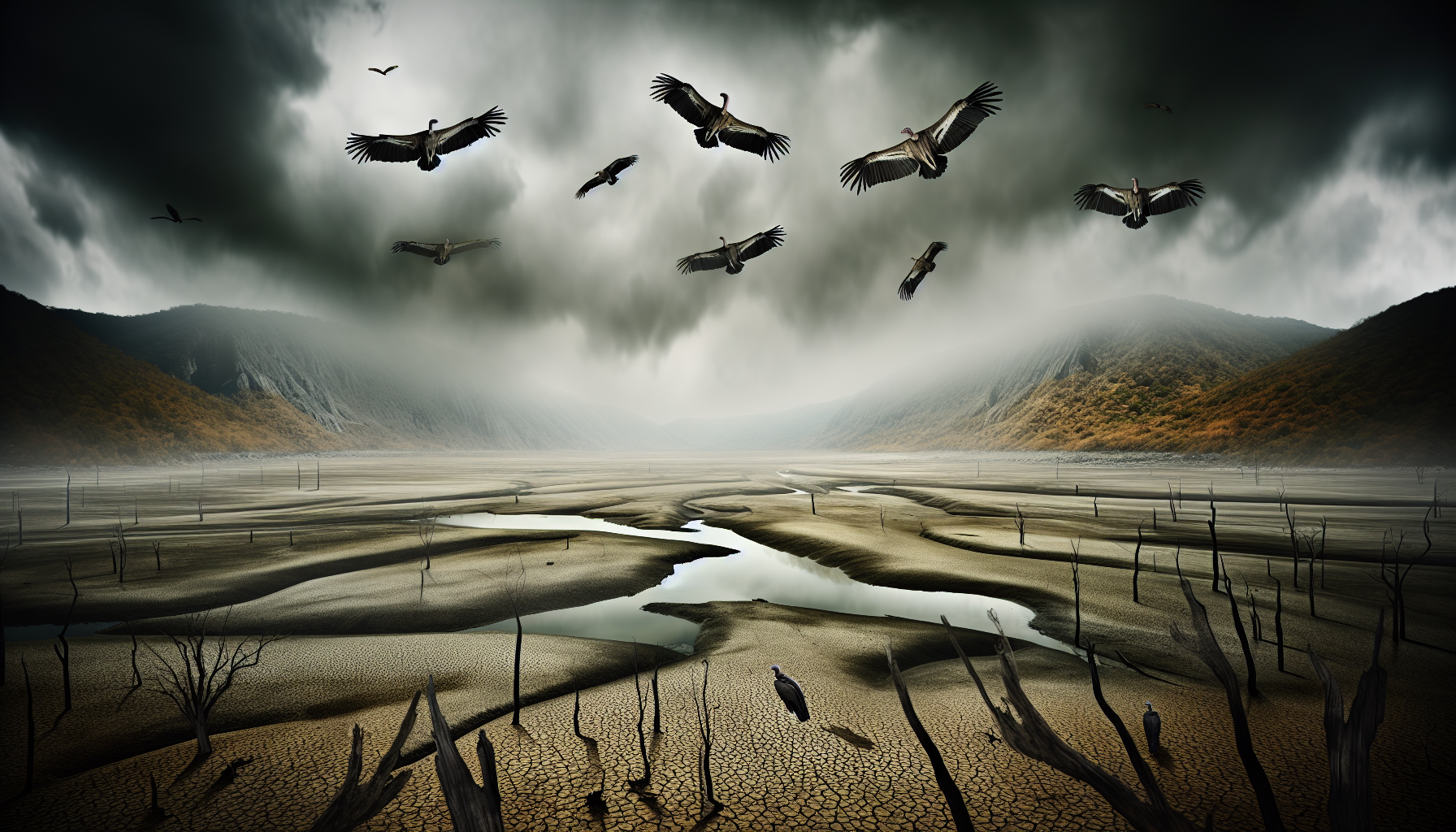In the shadow of the once-teeming life that soared across clear blue skies, today’s firmament is a stark contrast—a dance of macabre silhouettes tracing circles over desolate lands. As vultures’ wings cut through the heavy air of a world desiccated by human negligence, we’re forced to confront a harrowing truth. Our skies are silent not from peace, but from the absence of life that once chirped, buzzed, and fluttered amongst the foliage.
The eyes of the few remaining birds that circle overhead are stark reminders of the price of inaction. The vultures, ever the symbol of death, now seem to be the last avian custodians over a brittle landscape. The ecosystem starves, and with each passing day, more carcasses dot the cracked earth—a buffet for the scavengers aloft.
But this isn’t merely about the plight of avians; it’s a metaphor for a deeper malaise that afflicts our planet. The collapse of the food chain is evident when one considers that vultures are feeding on species that once had no shortage of sustenance. This is a grimly poetic footnote on the chapters of climate disasters we’ve been hastily scribing over the past decades.
As we bear witness to this aerial tragedy, it’s important to delve into the intricate web that binds these creatures to the fate of the world below. These birds, like the canaries in the coal mines, serve as harbingers of ecological decay. With their habitats despoiled and prey vanishing at an alarming rate, vultures have become the unexpected survivors in a game of environmental roulette.
As chroniclers of this grim saga, we grapple with narratives that do not offer solace.
Recently, we spoke of the death of pollinators, those tireless workers who once propagated life from bloom to bloom. Their decline has set into motion a cascade of desolation that reverberates up the food chain and now manifests in the gaunt frames of the scavengers that glide above. Synthetic substitutes for pollinators, introduced as a last-ditch attempt to spare us from our follies, cannot truly mimic the intricate tapestry woven by nature’s hand – a tapestry upon which these vultures are now mere ghostly stitches.
We are left to ponder: Are these the death throes of biodiversity, or are we gazing upon a resilient few finding their niche atop the pyramid of collapse? Scientists predict a steep decline in vulture populations should the current trajectory of climate and environmental disruption continue unabated. But so far, they endure, competing for the scraps of an ecosystem that once pulsed with a vibrant chorus of life.
Interlaced with fleeting vignettes of nature’s struggle, these vultures compel us to face the morose music of our own making. Through the lens of their survival, we gain a stark perspective on the cycle of life and death, echoing the warning that our own species’ fate is intertwined with these scavengers of the heavens and the decaying world over which they preside.
Even in this twilight of diversity, stories of tenacity emerge. Amidst the stark imagery of desolation, the article provides a narrative steeped in ecological awareness and a poignant examination of the surging environmental crises.
A haunting question thus flits through the mind—as vultures soar above barren fields, who witnesses the silent fall of these somber winged creatures when there’s no one left to look up? Will the day come when we scan the heavens and find them devoid of even these grim patrons of demise? The answers, it seems, are found not in the skies, but in the reflection of our collective consciousness and our willingness to resolve the blight we’ve authored.
